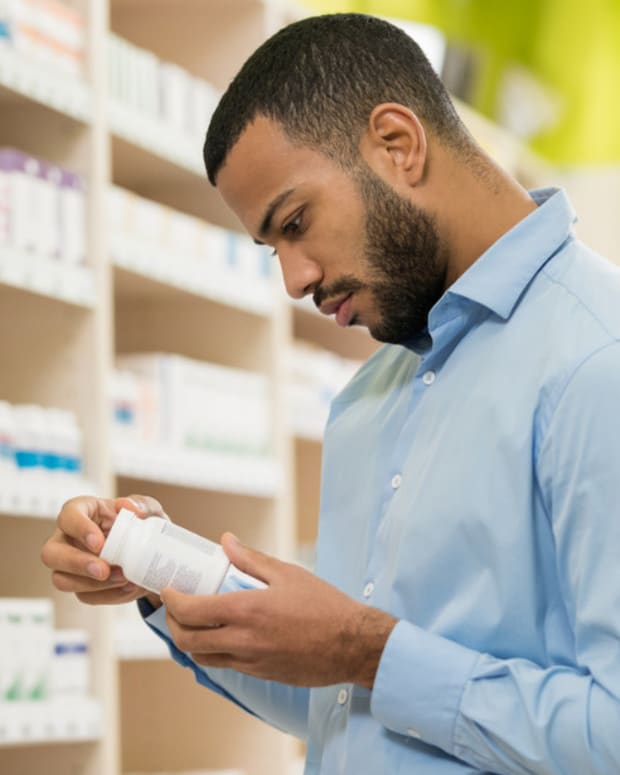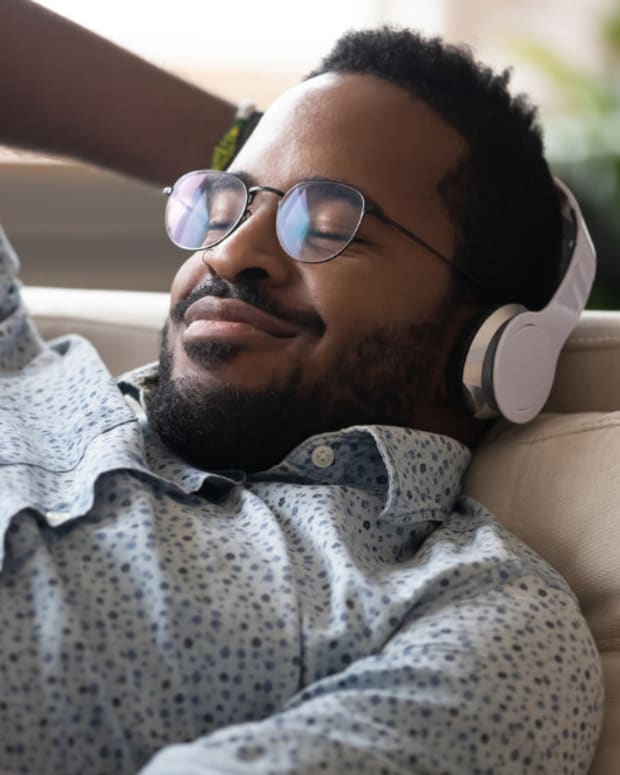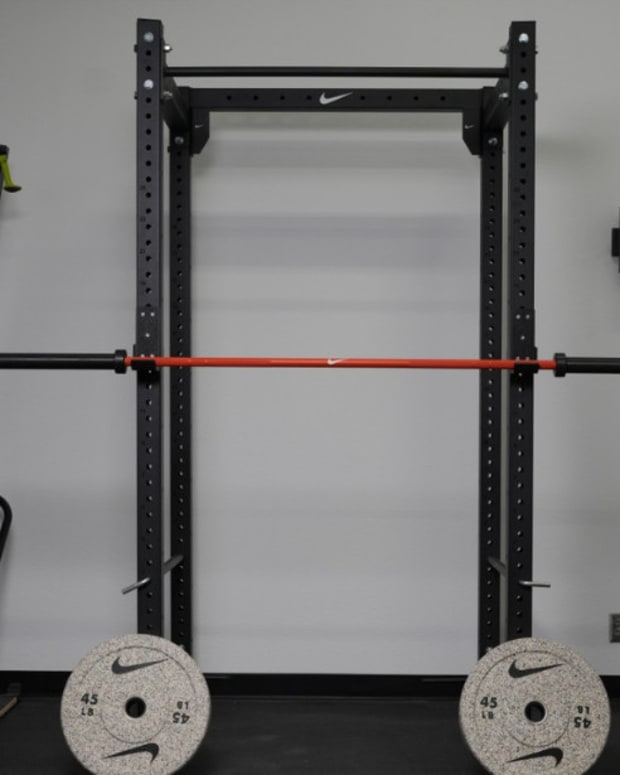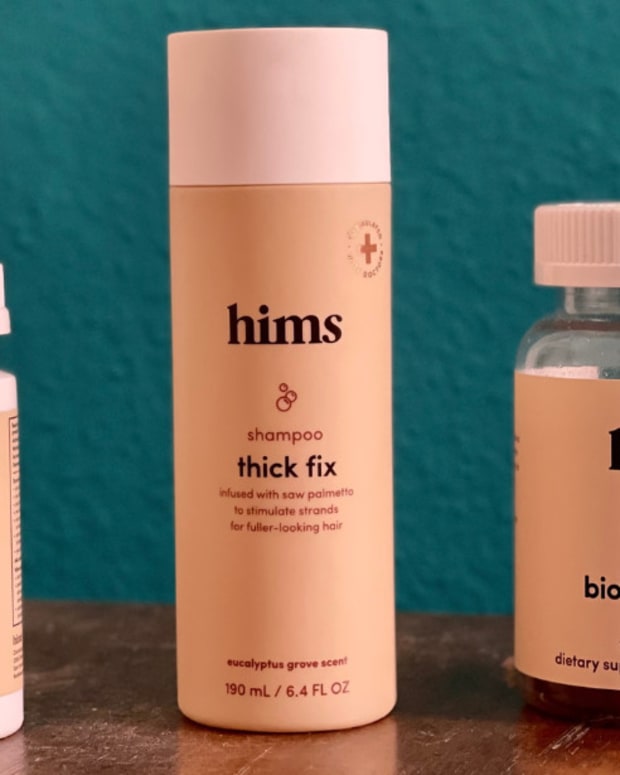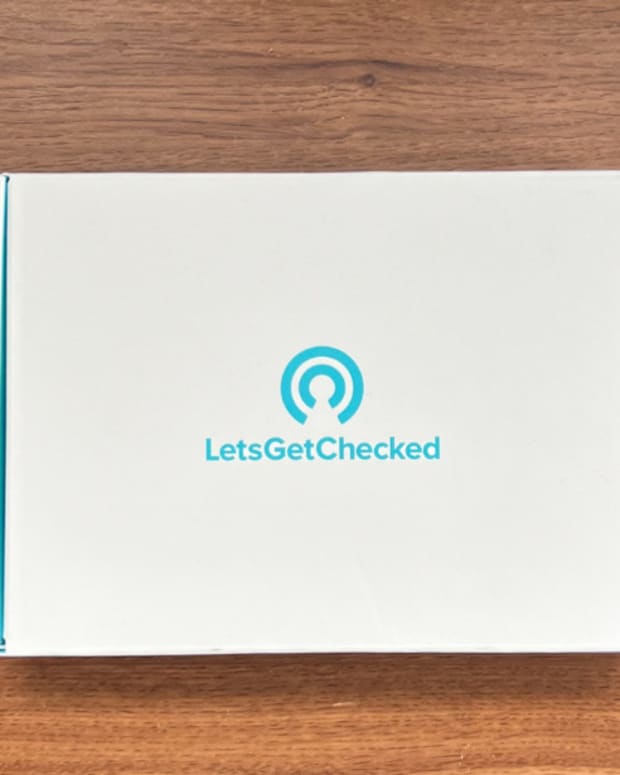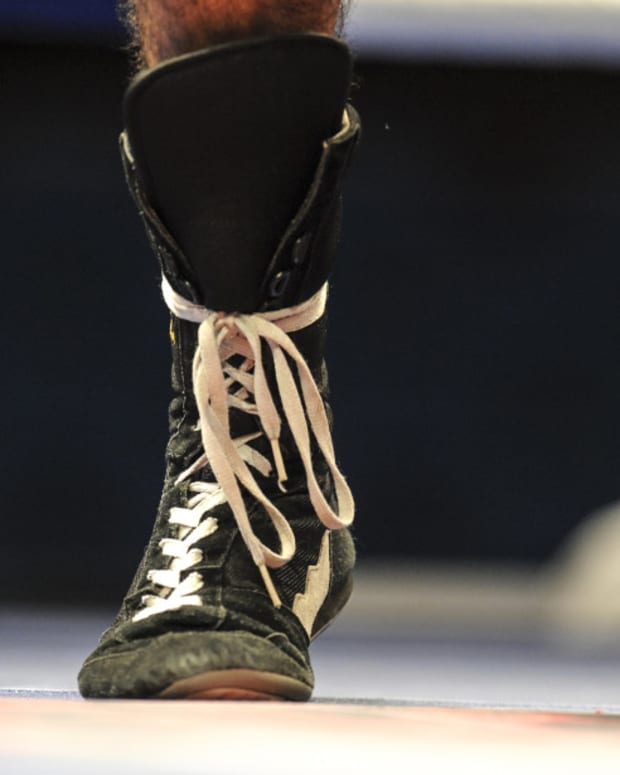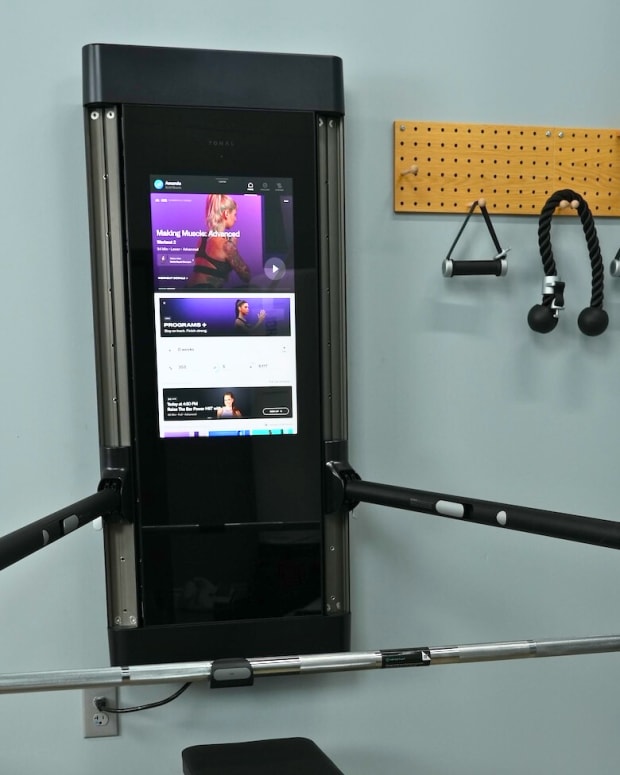The products featured in this article have been independently reviewed. When you buy something through the retail links on this page, we may earn commission at no cost to you, the reader. Sports Illustrated editorial staff are not involved in the creation of this content. Learn more here.
You don’t need to be an avid cyclist to understand that so much of your power potential in the saddle comes down to your feet. As you generate power from big muscles like your glutes, quads and calves, you have to transfer that energy to the bike pedals in order to propel the wheels forward (even when you’re riding in place). If your feet aren’t properly connected to the pedals, aren’t in the right position, or feel cramped, sweaty, unsupported or unstable, some of that energy is going to go to waste.
A good pair of cycling shoes is the foundation of strong riding—outdoors or indoors. What shoe is best for you will depend on what type of riding you do, your foot geometry and what type of performance benefits you’re looking for. If you’re not sure where to start, this list breaks down our top picks for the best cycling shoes alongside a comprehensive guide on why cycling shoes are beneficial, how to use them and what features you should look for so you can get the most out of every ride.
Our Picks for the Best Cycling Shoes of 2024:
- Best Road Cycling Shoes: Shimano RC3 Men’s | Shimano RC3 Women’s
- Best Cycling Shoes for Peloton: Pearl Izumi Quest (Women’s) | Pearl Izumi Quest (Men’s)
- Best Cycling Shoes for Triathlon: Louis Garneau Tri X-Lite III Men’s | Louis Garneau Tri X-Lite Women’s
- Best Mountain Biking Shoes: Specialized 2FO Cliplite
- Best Cycling Shoes for Wide Feet: Lake CX 238 Wide Cycling Shoe
- Best Lace-Up Cycling Shoes: Giro Empire ACC Men’s | Giro Empire ACC Women’s
- Best Budget Cycling Shoes: Bontrager Solstice
- Best Indoor Cycling Shoes: TIEM Slipstream Indoor Cycling Shoes
Best Road Cycling Shoes: Shimano RC3
Key Features:
- Price: $125
- Three-bolt cleat compatibility
- BOA lacing system for incremental adjustments
Shimano is one of the biggest brands in the cycling world, but this is an entry-level performance shoe even novice cyclists who’ve never heard of the company can get behind. It’s inspired by top-of-the-line models—in fact, the sleek, wraparound upper, made from a durable yet breathable synthetic leather, calls to mind the S-PHYRE series, which the brand calls the “pinnacle” of performance shoes. But while those shoes cost around $450, these ring up at a solid $325 less (a much more appealing price to newer or budget-conscious riders). It’s a cut down on price, but not comfort. The single BOA dial—which is placed centrally as opposed to near the top of the shoe, where laces would tie—allows you to make on-the-fly adjustments with a single hand to cinch down a super customized fit. Meanwhile, a fiberglass-reinforced nylon sole helps transfer power to the pedals without sacrificing all flexibility, and a low stack height helps improve stability as you ride.
Pros:
- Offers race-worthy construction at more affordable price
- Sliding cleat plate has three settings for a tiny bit of forward and backward adjustability
- Women’s version is constructed around female-specific geometry for an optimal fit
Cons:
- Difficult to walk in off the bike
- Single closure option may not feel secure enough
- Not compatible with two-bolt cleats
Best Cycling Shoes for Peloton: Pearl Izumi Quest
Key Features:
- Price: $100
- Three-bolt and two-bolt cleat compatibility
- Three hook-and-loop straps
The last thing you want to feel while riding your Peloton bike (or any bike, really) is swampy feet. The Pearl Izumi Quest cycling shoes have an upper made from heavily perforated film that’s bonded to highly breathable mesh in order to dump heat as you work up a sweat—whether that’s in your living room or out on the road. And even if your feet do start expanding, it’s easy to adjust the fit during a workout with three velcro hook-and-loop straps on each shoe. While these do have flat, smooth bottoms that would make walking on any surface difficult, the one-centimeter rubber heel bumpers ensure you won’t lose your footing when you hop off for a water refill or post-ride cool down. The best part: Peloton bikes use three-bolt cleats, but these are also compatible with two-bolt cleats if you want to switch them out to use on a different bike.
Pros:
- Carbon fiber forefoot insert provides lightweight stiffness and durability
- Design incorporates reflective elements for low-light visibility during outdoor riding
- Women’s version is constructed around female-specific geometry for an optimal fit
Cons:
- May run narrow
- May be slippery indoors
Best Cycling Shoes for Triathlon: Louis Garneau Tri X-Lite III
Key Features:
- Price: $269.99
- Compatible with three-bolt cleats
- Dual hook-and-loop straps
During a triathlon, every second counts—especially when transitioning between the swim and bike and the bike and run. Considering that Louis Garneau, the company, was founded by Louis Garneau, the gold medal-winning Olympic cyclist, you better believe that the lightweight Tri X-Lite is going to help keep you moving whether you’re between disciplines or out on the road. It’s super easy to get on and off thanks to two oversized hook-and-loop straps and an extended pull tab at the heel. The synthetic leather upper is lined with moisture-wicking fabric and has mesh inserts for added ventilation, so it’ll dry quickly whether you’re sweating or still drying off from the swim. And once you’re in the saddle, a stiff carbon composite outsole—which adds barely any weight to the shoe—helps you maximize energy transfer to the pedal so you can swiftly make up any lost time.
Pros:
- Ventilated areas expand to accommodate a variety of feet widths and prevent numbness
- Toe reinforcement boosts durability
- Very lightweight at 250 grams
Cons:
- Synthetic upper can be stiff
- Insoles are thin, some cyclists may require an insert for comfort on long rides
Best Mountain Biking Shoes: Specialized 2FO ClipLite
Key Features:
- Price: $199.99
- Compatible with two-bolt cleats
- Dual BOA dials for a customized fit
Mountain biking shoes that look just as cool off the bike? They do exist. Specialized’s 2FO ClipLite shoes are built on a cushioned EVA foam midsole and have a grippy rubber sole, two features that work together to provide comfort and stability whether you’re sending it or walking your bike on a particularly tricky section of trail (hey, we’ve all done it—and the recessed bolt holes make walking in these easy breezy). The microperforated synthetic upper is thermobonded—meaning it has no stitches—to avoid snags and improve durability, and the dual BOA dials, which can each be adjusted independently, have been slimmed down from previous versions so there’s no risk of getting caught on any obstacles. And if you’re the kind of rider who likes to finish your route at a coffee shop or brewery, there’s no need to bring along a second pair of shoes to change into.
Pros:
- Sole construction uses geometry that aligns hips, knees and feet to reduce the chance of injury and boost power
- Nylon composite plate aids pedaling performance
- Hydrophobic lining provides cushioning and doesn't retain water
Cons:
- Runs small, so size up
- Tongue and corners of the upper can rub
Best Cycling Shoes for Wide Feet: Lake CX 238 Wide Cycling Shoes
Key Features:
- Price: $329.99
- Compatible with three-bolt road cleats
- Dual BOA dials for a customized fit
There’s nothing worse than cramming your foot into a shoe that’s too narrow—especially when that shoe is a rigid cycling shoe designed not to flex. Not only is it uncomfortable, but it wastes your energy and may even up your risk of injury. Lake’s CX 238 cycling shoes cater to the riders who need a little more space for their foot to splay while they’re in the saddle. Constructed around a narrower heel and wider forefoot, this cycling shoe allows for foot expansion under pressure (you know, like pedaling hard for hours). Dual BOA dials on each shoe also allow you to customize the fit as needed; if your feet start swelling, you can loosen the cords just by popping out the dial and readjusting. All this talk about swelling and pressure might make you concerned about heat, but the mesh paneling and vents in the perforated leather upper will keep your feet cool even when they expand.
Pros:
- Offers 15 millimeters of additional space compared to the standard model
- Stiff carbon fiber outsole maximizes energy transfer
- Full-grain leather plus polyurethane upper is durable, with a panel at the heel and a rubber bumper at the toe for extra protection
Cons:
- Runs small, so sizing up is recommended
- Very expensive
Best Lace-Up Cycling Shoes: Giro Empire ACC ($299.95)
Key Features:
- Price: $299.95
- Three-bolt cleat compatibility
- Classic lace-up design
Giro’s Empire ACC cycling shoes may look retro thanks to their lace-up design, but don’t think for a second that means the company has skimped on modern performance features. For starters, the entire upper is made from a single piece of ultra-lightweight, breathable microfiber that fits like a second skin; the laces allow for a flexible fit, minute adjustments and an even spread of pressure. Overall, it’s an aerodynamic profile (with lots of perforation for breathability) that also cuts down on weight. That upper sits atop a super stiff carbon sole with a low stack—meaning your feet are this close to the pedals, allowing for maximum energy transfer when you’re pushing your limits. And on the inside is a thin EVA foam insole covered in antimicrobial fabric that offers easily swappable small, medium and large arch support so you can always ride in comfort.
Pros:
- Upper constructed from one piece of lightweight microfiber
- Features one of the stiffest soles in the industry
- Footbed is constructed with antimicrobial fiber to ward off odors and bacteria
Cons:
- Laces don’t allow for easy on-the-go adjustments
- Very expensive
Best Budget Cycling Shoes: Bontrage Solstice
Key Features:
- Price: $85
- Three-bolt cleat compatibility
- Two secure hook-and-loop closure straps
It’s tough to find a good pair of athletic shoes under $100, let alone a pair of high-performance cycling shoes. The Bontrage Solstice cycling shoes lack some of the features of more expensive pairs—like BOA dials, recessed cleats and a grippy tread—but those aren’t exactly essentials. The dual hook-and-loop closure straps allow for plenty of adjustability to find the right fit, the carbon/nylon composite soles are stiff yet walkable in case you need to hop off the bike for a minute, and the nylon upper is vented in the front and mid-section, where you’re most likely to overheat. And while the nylon composite soles don’t provide quite the same level of rigidity as higher-end performance models, you’re unlikely to see any negative effects from that little bit of flex. This shoe will work equally as well for indoor cyclists as it will for new road riders.
Pros:
- Also compatible with two-bolt SPD-style cleats with an optional mounting plate that can be purchased separately
- Padded tongue for comfort
- Unisex design
Cons:
- Velcro doesn’t offer as incremental adjustments as BOA system
- Sole is not as rigid as some competitors
Best Indoor Cycling Shoes: TIEM Slipstream Indoor Cycling Shoes
Key Features:
- Price: $135
- Two-bolt cleat compatibility
- Single-strap closure system
If these look like a regular pair of sneakers to you, that’s the point. TIEM’s Slipstream Indoor Cycling Shoes combine regular footwear design elements with performance cycling features at an affordable price. The biggest selling point are the recessed cleats, which allow you to walk around in these pre- or post-ride without worrying about dinging up the soles or cleats (or your floors, if you’re riding indoors)—and you’ll feel comfortable doing so thanks to the EVA midsole and grippy traction on the sole. The wide single strap and pull tab at the heel also make these easy to slip on and off, not that you’ll need to if you’re wearing them to and from a cycling studio. Ample mesh sections across the toebox and the sides of the shoe allow for ventilation mid-workout, so these won’t stink up your gym bag if you do change shoes post-workout.
Pros:
- Recessed cleat design allows for easier walking off the bike
- Easy to get on and off thanks to slip-on design and single-strap closure
- Available in a wide selection of colors
Cons:
- TIEM recommends choosing a half size down from your normal athletic shoe size
- Only compatible with two-bolt SPD cleats, which are sold separately
Why Buy Cycling Shoes?
You could ride a bike in practically any shoe. But a shoe specifically designed for cycling is going to keep you comfortable and help you ride more efficiently. Just like running shoes have specific features to help absorb repetitive impact and guide you through the gait cycle, cycling shoes aim to improve energy transfer, stabilize your foot and encourage proper alignment in the saddle and reduce the risk of hot spots and pain points no matter how long you pedal. Of course, if you don’t want to invest in a cycling-specific shoe, you don’t have to—but wearing a shoe that isn’t specifically designed for riding pretty much guarantees you won’t be getting the most out of your workouts on the bike.
Related Post: The Best Spin Shoes
How Cycling Shoes Work
Cycling shoes help keep your pedal stroke smooth and strong so you can be efficient in the saddle. If you look at the sole, you can see how stiff it is compared to a standard athletic shoe—that helps keep your foot flat and stable so you can maximize your energy output with every pedal stroke.
Then there are holes drilled into the bottom of the sole where you attach cleats—a plate made from metal or durable rubber—that clip into your bike pedals. Most cleats are attached externally, which can make walking in them feel awkward, but some cycling shoes have recessed cleats so you can easily move around off the bike. Either way, those cleats secure your foot to the pedals so you don’t have to worry about losing your footing, even at the highest speeds—another way of getting more power out of each stroke.
How to Choose the Best Cycling Shoes for You
Intended use
This isn’t that complicated: All cycling shoes are designed to help you ride more efficiently and comfortably. But there are specific models for all types of cyclists, from road warriors and indoor riders to mountain bikers and triathletes. Purchasing a pair that supports your favorite type of riding guarantees you’re going to get the features and benefits you need to optimize your rides.
Cleat compatibility
Cycling shoes clip into pedals to help you maximize energy transfer. There are two main ways they can do that: via a rectangular two-bolt mounting pattern or a triangular, three-bolt mounting pattern.
Two-bolt cleat mounts are very standard within the industry, with the SPD (Shimano Pedaling Dynamics) cleat being one of the most common. Two-bolt cleats can often be recessed into the shoe, making walking around much easier, and work with dual-sided pedals, which are easier to clip into, or indoor bikes that use clips and toe cages or a standard pedal.
Generally, you’ll find three-bolt cleat mounts on higher-end cycling shoe models—Look bike cleats (like the Delta, which is compatible with the Peloton bike, and the Keo) and Shimano SPD-SL cleats are popular examples. These are usually attached to the outside of a flat, smooth sole, which makes walking around awkward. (There are shoes with four-bolt soles, but those are less common.)
If you already have a bike, it’s crucial to check which cleats and soles your pedals are compatible with before purchasing cycling shoes. Some shoes are compatible with two- and three-bolt cleats. But if the shoes you buy aren’t compatible with the pedals on your bike, you won’t be able to wear them unless you’re able to swap out those pedals (which will be an added cost).
Fastening systems
While most athletic shoes lace up, that’s actually one of the least common fastening systems you’ll find on a cycling shoe. Traditional laces do provide good support and comfort, especially because you can adjust them exactly to your liking, but it’s difficult to make changes when you’re riding; you’ll have to stop pedaling and potentially even unclip from the pedals if you need to tighten or loosen the laces.
Velcro hook-and-loop straps, however, do allow for easier adjustments while riding. A single strap is generally the most entry-level option, but with dual or even triple straps on a single shoe, you can fine tune the pressure around different parts of your foot. However, Velcro does lose some of its stickiness over time, which can affect the lifespan of your shoe.
Rotary dials, like those from BOA, are a more modern fastening solution, and one you can find on both budget and high-end models. The BOA dial pulls and releases cables across the foot, providing incremental adjustments for a super customized fit; spin it one way to tighten the cable, then pop out the dial to quickly loosen the cables. One dial works similarly to a shoelace, but with two or even three dials, you can adjust the fit across the upper and lower parts of your foot to find the most comfortable fit possible.
Features
The sole, the cleat style, the fastening system and the fit are the most important things to keep in mind when shopping for cycling shoes. But, depending on what style of riding you partake in, you should also pay attention to a shoe’s upper material (what material is it made from? how breathable is it?), stack height (the lower, the better, to improve pedaling stability and power transfer), reflective features (for low-light riding), arch support, tread and extra protection (like toe bumpers and heel panels) to increase durability.
Cost
Quality cycling shoes range from under $100 to over $400. Even the budget shoes included in this list have performance-enhancing features that will benefit new and experienced riders. Figure out what you’re willing to spend, and then shop accordingly—don’t feel like you need to spend hundreds of dollars on super niche features that may not make a huge difference overall.
FAQs
Are more expensive cycling shoes worth it?
This depends on how you use them. If you’re a casual rider or only using cycling shoes for indoor riding, all you really need is a shoe that fits comfortably, is breathable, and has the bare minimum when it comes to performance features—and you can get all that in a budget cycling shoe that costs under $150.
Even more experienced cyclists don’t necessarily need a top-of-the-line racing shoe. A shoe in the $200 to $300 range will likely serve your needs; you’re not going to get that much more from a $400-plus shoe. However, if you have the budget and you’re really looking to take your performance to the next level, it may be worth paying a premium price for a high-end long-lasting cycling shoe.
Can I wear running shoes for cycling?
You can, but because of the way your foot interacts with the pedals, the more flexible sole found on running shoes may lead to hot spots and foot fatigue when you’re riding for extended periods.
Should I buy cycling shoes a size bigger?
Depending on the brand, sizing can vary in cycling shoes. Generally, you should be able to buy the same size that you would buy in any other type of athletic shoe. But if you’re between sizes, size up—your feet can swell during activity and you’ll be happy for any extra room. Make sure to check reviews and company size charts if you’re still unsure; they may provide insights that can save you from having to return and exchange items.
Should your toes touch the front of your cycling shoes?
No. Cycling shoes should fit snugly and as close to the foot as possible, but there should still be just a smidge (even a few millimeters) between your toes and the front of the shoes when you’re standing. You might not be able to wiggle your toes, but your toes shouldn’t press against the front of the shoes.
Final Thoughts
There are probably as many styles of cycling shoes out there as there are bike models. It can be easy to get caught up in the hype of high-performance promises, but you don’t need to max out your credit card for a cycling shoe that’s comfortable and efficient. Before you buy, consider what type of rider you are, what features are most important to you, and what your budget is—that will help narrow down what can be an overwhelming search, and ensure that you’re not paying for unnecessary features, only what you need.
Prices are accurate and items in stock as of publish time.









